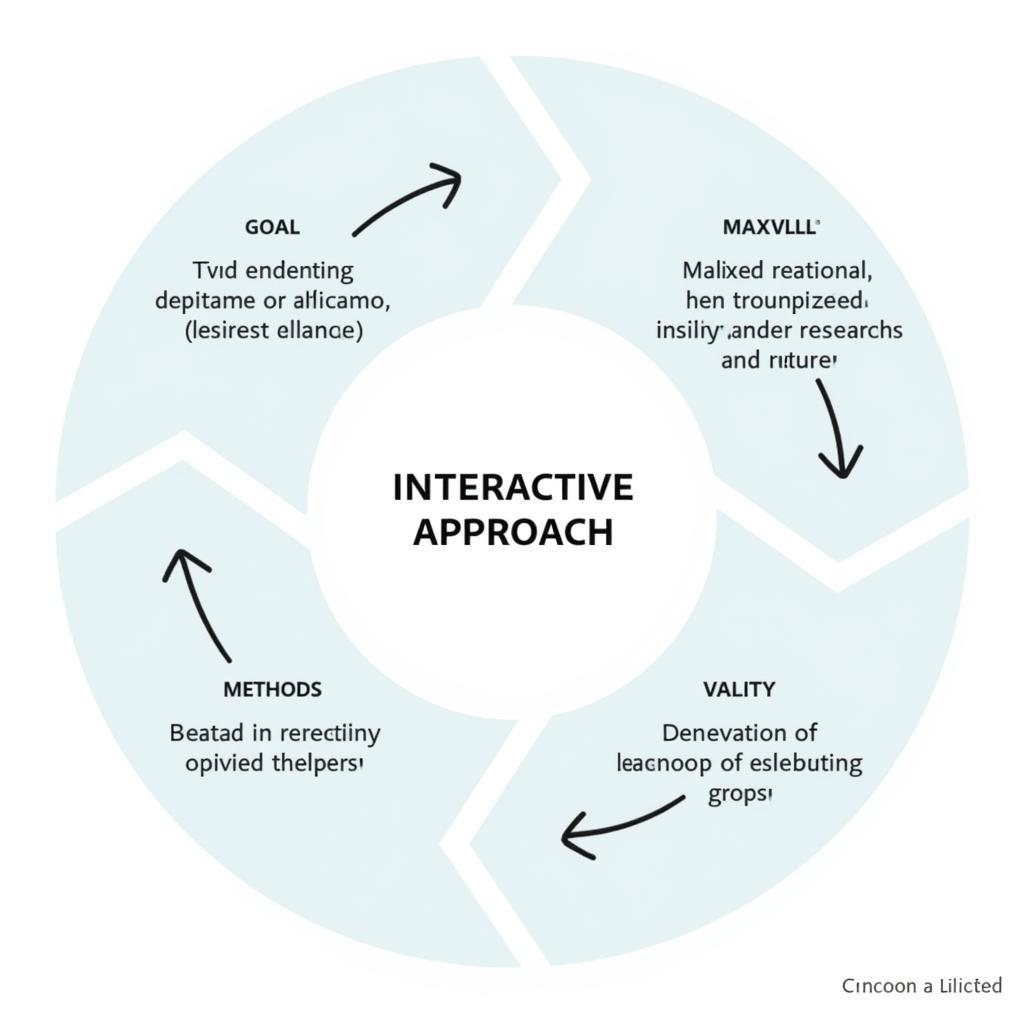Qualitative research design, as presented in Maxwell’s interactive approach, offers a powerful framework for exploring the often elusive and subjective nature of paranormal phenomena. This approach emphasizes the interconnectedness of different research components and encourages a flexible, iterative process. Understanding this methodology can be crucial for anyone seeking to rigorously investigate paranormal experiences.
Delving into Maxwell’s Interactive Approach to Qualitative Research Design
Maxwell’s approach to qualitative research design isn’t a rigid set of rules, but rather a dynamic interplay of five key components: goals, conceptual framework, methods, validity, and research questions. These elements influence and shape one another, creating a research process that is both responsive and rigorous. This cyclical nature allows researchers to adapt their approach as their understanding of the phenomenon evolves, a particularly valuable aspect when dealing with the unpredictable nature of paranormal research.
Goals: Defining the Purpose of Paranormal Investigation
Clearly defined goals are the bedrock of any successful research endeavor. In paranormal research, these goals might involve understanding the lived experiences of individuals who have encountered unexplained phenomena, exploring the cultural context of paranormal beliefs, or even testing specific hypotheses about the nature of these experiences. A well-defined goal provides direction and focus, guiding the entire research process.
Conceptual Framework: Building a Theoretical Foundation
A conceptual framework acts as the lens through which the research is viewed. It provides a theoretical context for interpreting data and understanding the phenomenon under investigation. For paranormal research, this might involve drawing on theories from psychology, sociology, anthropology, or even physics to provide a framework for understanding experiences often attributed to the supernatural.
 Conceptual Framework for Paranormal Research
Conceptual Framework for Paranormal Research
Methods: Choosing the Right Tools for the Job
The methods employed in qualitative research are as diverse as the phenomena they investigate. In paranormal research, this might involve conducting in-depth interviews with witnesses, analyzing historical accounts of paranormal activity, or using observational techniques during investigations. Maxwell’s interactive approach emphasizes the importance of selecting methods that align with the research goals and the nature of the phenomenon being studied.
Validity: Ensuring the Integrity of Paranormal Research
Validity refers to the accuracy and trustworthiness of the research findings. In paranormal research, establishing validity can be particularly challenging due to the subjective nature of the data and the potential for bias. Maxwell’s interactive approach encourages researchers to consider various strategies for enhancing validity, such as triangulation (using multiple data sources), member checking (verifying interpretations with participants), and reflexivity (reflecting on the researcher’s own biases and assumptions).
Research Questions: Guiding the Inquiry
Research questions provide a roadmap for the investigation. They should be open-ended and exploratory, allowing for unexpected discoveries and insights. In paranormal research, research questions might focus on the characteristics of a particular phenomenon, the experiences of those who have encountered it, or the cultural meanings associated with it.
Why Maxwell’s Approach is Ideal for Paranormal Research
The interactive nature of Maxwell’s approach allows for flexibility and adaptability, which is essential when dealing with the complex and often ambiguous nature of paranormal phenomena. It allows researchers to refine their approach as they gather data and gain a deeper understanding of the subject. This iterative process can lead to more nuanced and insightful findings.
Conclusion: Embracing a Rigorous Approach to the Paranormal
Maxwell’s qualitative research design provides a robust and adaptable framework for investigating paranormal phenomena. By carefully considering the interconnectedness of goals, conceptual frameworks, methods, validity, and research questions, researchers can conduct rigorous and meaningful investigations into the unexplained. This approach encourages a dynamic and evolving understanding of the paranormal, leading to more insightful and impactful research. Embracing this framework can enhance the credibility and contribute to a more sophisticated understanding of the paranormal.
FAQ
- What is the core principle of Maxwell’s interactive approach? The core principle is the interconnectedness of the five components, allowing for a flexible and responsive research process.
- How does Maxwell’s approach differ from traditional research designs? It emphasizes flexibility and iteration, unlike the linear progression of traditional designs.
- Why is validity crucial in paranormal research? Because of the subjective nature of the data and the potential for bias, rigorous validation is essential for credible findings.
- How can I apply Maxwell’s approach to my own paranormal investigation? Start by defining clear goals, develop a relevant conceptual framework, select appropriate methods, prioritize validity, and formulate open-ended research questions.
- What are some examples of qualitative methods used in paranormal research? Interviews, observations, document analysis, and case studies are common qualitative methods used in this field.
 Maxwell's Interactive Approach Diagram
Maxwell's Interactive Approach Diagram
Need help with your Paranormal Research? Contact us 24/7 at Phone Number: 0904826292, Email: research@gmail.com or visit us at No. 31, Alley 142/7, P. Phú Viên, Bồ Đề, Long Biên, Hà Nội, Việt Nam. We’re here to assist you.